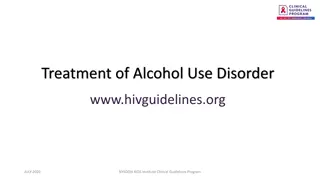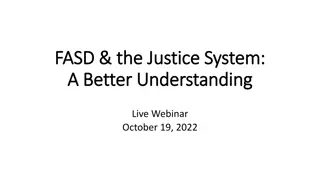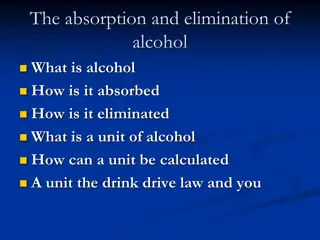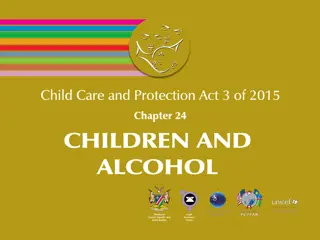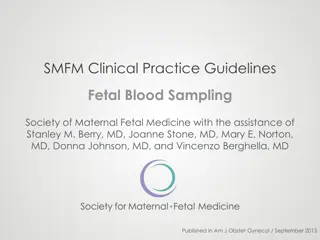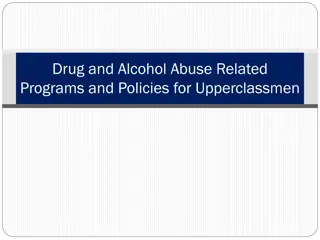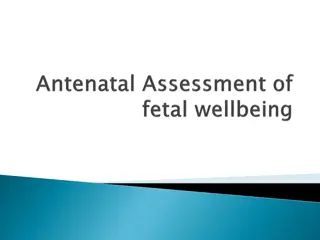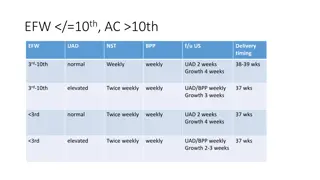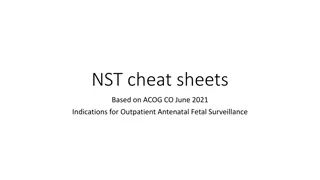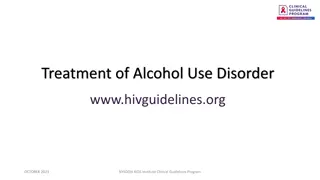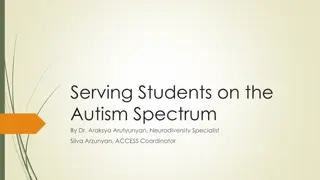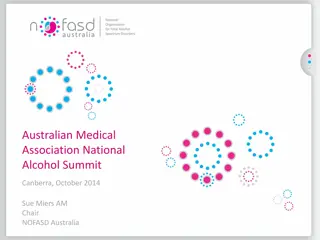Understanding Fetal Alcohol Spectrum Disorder (FASD) in the Justice System
Explore the complexities of Fetal Alcohol Spectrum Disorder (FASD) and its intersection with the justice system. Topics include FASD terminology, interpreting diagnoses, implications in court proceedings, and more. Gain insights into the challenges and considerations surrounding FASD-affected individuals within the legal context.
Download Presentation

Please find below an Image/Link to download the presentation.
The content on the website is provided AS IS for your information and personal use only. It may not be sold, licensed, or shared on other websites without obtaining consent from the author. Download presentation by click this link. If you encounter any issues during the download, it is possible that the publisher has removed the file from their server.
E N D
Presentation Transcript
FASD & the Justice System: FASD & the Justice System: A Better Understanding A Better Understanding Part II Part II Live Webinar March 21, 2023
What we will cover: What we will cover: 1. What does it mean to have FASD? 2. FASD terminology 3. Interpreting an FASD diagnosis 4. Implications of an FASD diagnosis 5. Examining or cross-examining someone affected by FASD 6. Examining or cross-examining an expert witness 7. Other issues 2
What does it mean to have FASD? What does it mean to have FASD? What does it mean to the person who is FASD-affected? Are there common traits? Can you tell before you begin the diagnostic process if someone is likely affected by FASD? What does it mean to those in the court process to be told that someone is FASD- affected? What perspectives or preconceptions do you see? 3
FASD terminology FASD terminology Diagnostic terms used over the years: FAS pFAS ARND ARBD FAE Others 4
FASD terminology, contd FASD terminology, cont d Current Canadian diagnostic terms: FASD-sff (FASD with sentinel facial features) FASD w/o SFF (FASD without sentinel facial features) 5
FASD terminology, contd FASD terminology, cont d How should former diagnostic terms be interpreted today? What is dysmaturity and how does it manifest itself in a person? 6
Interpreting an FASD diagnosis Interpreting an FASD diagnosis How can a lawyer interpret an FASD diagnosis for the courts or should they even try? Is there such a thing as a plain language FASD diagnosis and what is gained or lost with such a diagnosis? What is the relevance of the various tests used to obtain a diagnosis? 7
Implications of an FASD diagnosis Implications of an FASD diagnosis Is each diagnosis unique or are there commonalities among all who receive a diagnosis? The planning dilemma if the act is not completely spontaneous can FASD still be a factor in the offence, and other common misconceptions 8
Examining or cross Examining or cross- -examining someone with FASD examining someone with FASD How should counsel ask questions of someone who is FASD- affected? What types of cross-examination questions can fairly be asked of someone who is FASD-affected and what should be out of bounds ? 9
Examining or cross Examining or cross- -examining an expert witness examining an expert witness What are the three questions you wish counsel would ask you about their client/witness/victim who is FASD- affected? What qualifications should someone have to fairly be able to provide counter argument to an FASD diagnosis? 10
Other issues Other issues Remember 11
Ten Ways to Modify Your Approach to Be FASD-Informed: 1. 2. 3. 4. 5. 6. 7. Slow down. When offering direction or delivering instruction, do so step-by-step. Use plain and concise language. Avoid abstract language and metaphors. People with FASD are concrete thinkers. Explain things as clearly as possible. Test for understanding by asking the individual to explain in their own words their understanding of what is happening. Modify the setting if they appear to be distracted. Individuals with FASD are often visual thinkers and learners. If you are having problems communicating with words, try using pictures. Translate complex ideas or documents into understandable terms. For example, explain a bail or probation condition in plain language versus relying on template documents that can be confusing. Individuals with FASD may not understand their Charter rights or other rights if you use language that is complex for them. Explain these rights in plain language. Remember: People with FASD are often experiencing multiple challenges that are more effectively addressed outside the justice system, for example through involvement of social services or health supports. Think about this individual, how FASD manifests itself for them, and be creative. 8. 9. 10. 12
A Helpful Resource https://www.fasdjustice.ca/en-ca/
Evaluation Evaluation Please use this link to complete a short short survey about your experience with this webinar. https://www.surveymonkey.com/r/MHQGXG5 14





